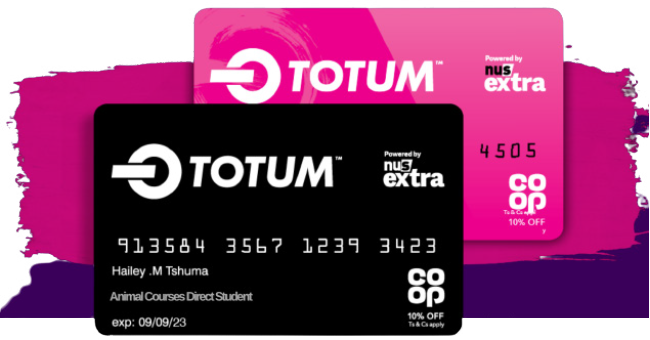Fascinating Facts About Giraffes
There are many majestic creatures in the animal kingdom that capture the hearts of people the world over, but the giraffe seems to top the list as many people’s favourite animal. It’s no wonder really that we find them so fascinating when there are so many weird and wonderful giraffe facts that help the modern-day brachiosaurus keep us captivated.If you’re one of the many people who love these animals, we’ve compiled a list of fun facts about giraffes to indulge this adoration. Plus, the ways you can help giraffes live a better life in the future!
Giraffes Can Communicate in Ways We Can’t Hear
For those of you wondering ‘What noise does a giraffe make?’ you’re not alone. Many people haven’t ever heard their sounds because giraffe noise is in most cases inaudible to humans.Now, they have been known to do the odd whistle to warn others about danger and bellow, snort, or hiss on rare occasions. However, they have the ability to communicate infrasonically, which means all other giraffe sounds are too low for us to pick up.
They are also known to be quite the fan of communicating via their eye positioning and often use a prolonged stare to raise the alarm when danger is afoot.
No Two Giraffes Are the Same
While they might look the same at first glance, each giraffe has a unique pattern of spots which act as its version of the human fingerprint. While these spots help the giraffe camouflage itself when needed, a large blood vessel sits around each spot and branches off in a complex system of blood vessels underneath it.This helps the giraffe expel heat from the body as and when it needs to by sending blood through the smaller blood vessels into the middle of each patch.
.jpg)
Giraffes Are Almost Always on Their Feet
As tiring as it seems living life in barren desert-like areas and trekking for miles for the next meal, giraffes don’t ever really put their feet up. They remain standing for most of their lives, even while sleeping and giving birth!So much is the natural urge to stand up, a baby giraffe will be up and walking on its feet only a couple of hours after being born.
They Don’t Sleep Much
Just like they aren’t a fan of sitting, giraffes also don’t get much shuteye. While you would think they’d need a lot of sleep to recover after long days searching for food and fending off predators, they actually only sleep for between 5 and 30 minutes in a 24-hour period!They are also a fan of a nana-nap as they tend to get this rest in short dozes that last only one or two minutes.
Giraffes Are the Tallest Mammal Around
If you’re wondering ‘How tall is a giraffe?’, they can reach an astonishing 5.5m in height! This makes them the tallest living land animal today. In many cases, their legs reach 6 feet in height, which is taller than most people.Being so averse to sitting, this means that a baby giraffe has a rough entry into the world as they are first met with a drop of 1.5 metres to the floor.
In addition to being immensely tall, giraffes are also incredibly fast and can get up to 60km an hour when sprinting over short distances.
We Share the Same Neck Structure
This might sound impossible when you look at the appearance of a giraffe's neck next to a human, but for anyone wondering ‘How many bones in a giraffe's neck?’, we actually have the exact same number!Both humans and giraffes have seven vertebrae in their neck, but unlike a human, the giraffe’s vertebrae are up to 25cm long. This allows them to spot predators and access food that is out of the reach of other animals.
Comically, their necks are still too short for them to reach the floor, so giraffes need to spread their legs in an awkward stance when they want to drink water. A giraffe will also use its neck to fight when required and the complicated system within the neck helps them bend to take a drink without too much blood rushing to their heads.
Their tongues are also an interesting feature. If you want to know ‘How long is giraffe tongue?’, they can grow up to 45cm in length and can wrap easily around food.
.jpg)
There Is More Than One Type of Giraffe
Many of us assume there is only one type of giraffe, but there are 9 known types!The various types of giraffes include:
- Angolan Giraffe (G. g. Angolensis)
- Kordofan Giraffe (G. c. Antiquorum)
- Masai Giraffe (Giraffa Tippelskirchi)
- Northern Giraffe (Giraffe Camelopardalis)
- Nubian Giraffe (G. c. Camelopardalis)
- Reticulated Giraffe (Giraffa Reticulate)
- Southern Giraffe (Giraffa Giraffa)
- South African Giraffe (G. g. Giraffa)
- West African Giraffe (G. c. Peralta)
Giraffes Are a Keystone Species
Giraffes hold the title of being a keystone species, as they have such an important role within their ecosystems. They are detrimental to the balance of the ecosystem as their ability to eat food out of reach of any other species helps encourage the growth and seed distribution of essential wild plants.The giraffe’s favourite food is the Acai tree, and they are actually vital to this species of tree’s survival. This is because many seedlings don’t germinate until they have passed through the animal’s digestive system.
A giraffe’s sheer size also means they can open up new areas within overgrown foliage that other animals and wildlife species can make use of.
.jpg)
How You Can Help to Protect Giraffes
Sadly, for those asking ‘Are giraffes endangered? The answer is yes. Giraffes, like many other animal species, are at risk of extinction because of human activity that has led to habitat loss, poaching, disease and other dangerous elements.As a keystone species, the survival of the giraffe is detrimental to the ongoing existence of many other animals and living species in the wild. When checking how many giraffes are left in the world, today it’s estimated there are only 111,000. All of these are vulnerable; however, several subspecies are in the endangered or critically endangered category.
There are certain things you can do to help giraffes live a long and healthy life alongside humans, you can donate to charities, adopt a giraffe, or do your bit to reduce climate change. Though, if you want to do more, you can align your career to protect these incredible animals.
Study Online Animal Courses
Animal Courses Direct have a host of animal courses that can position you to work in any number of careers related to animal care. Though, if you want to work with giraffes specifically, there are certain avenues you can focus on.You can study:
- Conservation and biodiversity management – learn why giraffes are at-risk and what you can do to safeguard these species in your career
- Veterinary care – study courses in veterinary care ahead of further veterinary training that enables you to work with large animal species like giraffes in man-made environments or in the wild
- Zookeeping – get qualified to work in a zoo and support the ongoing conservation efforts and education schemes to help giraffes and other at-risk animals
- Zoology – study the makeup of giraffes and other wildlife species ahead of a career that focuses on learning more about what these majestic creatures need to thrive
.jpg)
















